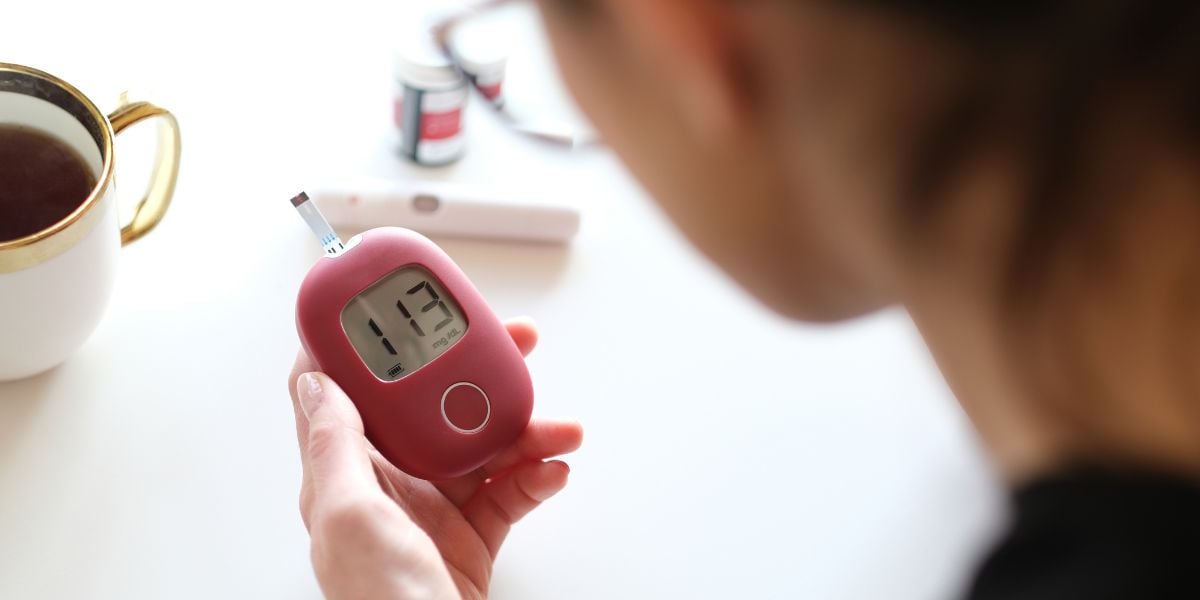The ISO guidelines for blood glucose meters are a detailed set of standards which blood glucose meters should meet.
The name ISO stands for International Organization for Standardizatio, the organisatio, based in Geneva, Switzerland, that is responsible for defining the standards.
Currently, the set of standards which need to be met are the set of standards that were published in 2003 (ISO: 15197:2003). In 2013, an updated set of standards (ISO: 15197:2013) were published and these newer standards will need to be met blood glucose meter manufacturers by the end of May 2016.
What do the ISO standards require?
The ISO standards have a number of different components which need to be met. The 2003 ISO standards included system accuracy and user performance components.
The new 2013 ISO standards included additional components such as:
- Evaluation of instructions of use
- Influence quantities of interfering substances
The system accuracy requirements are carried out by comparing blood glucose results of meters against the glucose level provided by a laboratory measurement. The YSI 2300 STAT Plus glucose analyser is able to perform the laboratory measurement.
The user performance evaluates the accuracy when the testing is performed by patients.
The evaluation of instructions for use is designed to evaluate whether the instructions for the meter are clear enough.
The influence quantities of interferents tests whether the meter can perform effectively for testing blood that has different levels of substances that could interfere with the result of the test. 24 potential interferents are listed by the ISO 2013 standards and these substances include haematocrit levels (the volume of red blood cells in the blood), cholesterol levels and levels of common drugs such as ibuprofen.
ISO system accuracy standards for blood glucose meters
Currently blood glucose meters need to meet the system accuracy standards of 2003 (ISO: 15197:2003) which state that 95% of blood glucose results should be:
- Within ± 0.83 mmol/L of laboratory results at concentrations of under 4.2 mmol/L
(Within ± 15 mg/dl of laboratory results at concentrations of under 75 mg/dL) - Within ± 20% of laboratory results at concentrations of 4.2 mmol/L (75 mg/dL) or more
In 2013 new, tighter accuracy standards (ISO: 15197:2013) were drawn up, requiring that 95% of blood glucose results should reach the following standard
- Within ± 0.83 mmol/L of laboratory results at concentrations of under 5.6 mmol/L
(Within ± 15 mg/dl of laboratory results at concentrations of under 100 mg/dL) - Within ± 20% of laboratory results at concentrations of 5.6 mmol/L (100 mg/dL) or more
The 2013 guidelines also now stipulate that 99% of readings must fall within zones A and B of the Consensus Error Grid for type 1 diabetes.
Blood glucose monitor manufacturers must ensure their blood glucose meters meet the 2013 accuracy standards by the end of May 2016
What do the ISO standards mean for people with diabetes?
The ISO standards are important for ensuring the blood glucose monitors we use are sufficiently reliable on a day to day basis. The move to the tighter 2013 standards is a positive advance as it will mean blood glucose meters will need to be more accurate and therefore provide greater confidence to us as users of the meters.
<!–
Which meters meet the ISO standard?
Diabetes.co.uk contacted all of the UK’s blood glucose meter manufacturers in order to establish which meters meet the latest ISO standards.
| Test strip | Meter | ISO 15197:2003 | ISO 15197:2013 |
|---|---|---|---|
| Advocate Redi-Code+ | |||
| AutoSense | |||
| Aviva | |||
| BGStar | |||
| CareSens N | |||
| Contour | |||
| Contour NEXT | |||
| Contour TS | |||
| CozyLab S7 | |||
| Dario | |||
| Dario Lite | |||
| eBchek | |||
| Element | |||
| Finetest Lite | |||
| FreeStyle | |||
| FreeStyle Lite | |||
| FreeStyle Optium | |||
| GlucoDock Glucose | |||
| GlucoLab | |||
| GlucoMen areo Sensor | |||
| GlucoMen GM | |||
| GlucoMen LX Sensor | |||
| GlucoMen Sensor | |||
| GlucoMen Visio | |||
| GlucoNavii | |||
| GlucoRx HCT Glucose Test Strips | |||
| GlucoRx Original Strips | |||
| GlucoRx Nexus Strips | |||
| GlucoZen.auto | |||
| GluNEO | |||
| iHealth | |||
| IME-DC | |||
| MedisenseSoftSense | |||
| MediTouch | |||
| MediTouch 2 | |||
| Microdot+ | |||
| MODZ | |||
| Myglucohealth | |||
| Mylife Pura | |||
| Mylife Unio | |||
| Chemical Reagent | |||
| Omnitest 3 | |||
| On-Call Advanced | |||
| OneTouch Select Plus | |||
| OneTouch Ultra | |||
| OneTouch Verio | |||
| OneTouch Vita | |||
| palmdoc iCare Advanced (formerly iCare Advanced) | |||
| palmdoc iCare Advanced Solo (formerly iCare Advanced Solo) | |||
| Performa | |||
| SD Codefree | |||
| Sensocard | |||
| SuperCheck Plus | |||
| SuperCheck 2 | |||
| SURESIGN Resure | |||
| TEE2 | |||
| TRUEone | TRUEone | Compliant | |
| TRUEresult | TRUEresult | Compliant | Compliant |
| TRUEresult twist | Compliant | Compliant | |
| TrueTrack System | TRUEtrack | Compliant | |
| TRUEyou | TRUEyou | Compliant | Compliant |
| TRUEyou mini | Compliant | Compliant | |
| WaveSense JAZZ | |||
| WaveSense JAZZ Duo | |||
<!–
GMMMG evaluation of blood glucose test strips
In 2015, the NHS Greater Manchester Medicines Management Group (GMMMG) published a review of blood glucose meters which included the accuracy of blood glucose test strips. [142] To help with interpreting results, the following lists state which meters fall into the accuracy groups defined by the GMMMG.
The grouping is intended as a recommendation for the 12 clinical commissioning groups (CCGs) in the Greater Manchester area and does not inherently denote a lack of quality in the meters or test strips. Please note that this is not a comprehensive listing of ISO compliant blood glucose meters and as more information becomes available, this page will be updated.
Group 1
The following meters were listed in the review as providing independent and published evidence of attainment of the 2013 ISO accuracy standards (defined as Group 1):
- Abbott Freestyle InsuLinx
- Abbott FreeStyle Optium Neo
- Ascensia Contour XT
- Ascensia Contour NEXT
- Bayer Contour NEXT USB
- Bayer Contour NEXT Link
- GlucoRx Nexus
- GlucoRx Nexus Mini
- GlucoRx Nexus Voice
- Infopia Element
- Infopia GluNEO
- Lifescan OneTouch SelectPlus
- Lifescan OneTouch Verio
- Lifescan OneTouch Verio IQ
- Menarini GlucoMen Areo
- Menarini GlucoMen LX Plus
- Nipro Diagnostics TRUEyou
- Nipro Diagnostics TRUEyou Mini
- Roche Accu-Chek Active
- Roche Accu-Chek Aviva
- Roche Accu-Chek Aviva Combo
- Roche Accu-Chek Aviva Expert
- Roche Accu-Chek Aviva Nano
- Roche Accu-Chek Mobile
- Sanofi BG Star
- Sanofi iBG Star
- Sanofi MyStar Extra
- Spirit Healthcare CareSens N
- Spirit Healthcare CareSens N POP
- Spirit Healthcare CareSens N Voice
- Spirit Healthcare TEE2
- Ypsomed mylife Pura (also known as Pura X)
- Ypsomed mylife Unio
Group 2
The review also listed the following meters for which manufacturers provided independently assessed but non-published evidence of conformity to ISO 15197:2013 accuracy standards (defined as Group 2):
- Agamatrix Wavesense Jazz
- Apollo Medical SuperCheck 2
- Apollo Medical SuperCheck Plus
- Ascensia Contour TS
- B Braun Omnitest 3
- SD Bionsensor SD Codefree
Considered for the GMMMG ‘Do Not Prescribe’ List
The review also listed the following meters to be considered for the Greater Manchester ‘Do Not Prescribe’ list. Blood glucose test strips featured on this list are given reasons for exclusion. Reasons include the blood glucose test strips no longer being promoted by the manufacturer, being excluded from the review due to a lack of response from the manufacturer, or have insufficient evidence of meeting ISO 15197:2013 accuracy standards at time of evaluation (December, 2015).
Excluded due to no response
- 77 Elektronika AutoSense
- 77 Elektronika AutoSense Voice
- 77 Elektronika Sensocard
- Cambridge Sensors Microdot+ (evidence expected March 2016)
- Dario Smart Meter*
- National Diagnostic Products Betachek C50
- National Diagnostic Products Betachek G5
- Merck Serono Mendor Discreet
- Terumo FineTouch
No longer promoted by manufacturer
- Nipro Diagnostics TRUEresult*
- Nipro Diagnostics TRUEresult Twist*
- Nipro Diagnostics TRUEone*
- Nipro Diagnostics TRUEtrack*
- Nipro Diagnostics TRUEtrack Smart*
- Medisana GlucoDock
- Medisana MediTouch
- Menarini GlucoMen Glyco
- Menarini GlucoMen GM
- Menarini Glucomen PC
- Menarini GlucoMen Visio
Insufficient evidence of meeting ISO15197:2015 accuracy standards as per evaluation
- Ascensia Breeze 2.
- Ascensia Contour.
- Ascensia Contour Link.
- Ascensia Contour USB.
- Ascensia Didget†
- Ciga Healthcare Suresign Resure
- Lifescan OneTouch Ultra2.
- Lifescan OneTouch UltraEasy.
- Lifescan OneTouch UltraSmart.
- Lifescan OneTouch Vita
- Entra Health MyGlucoHealth
- iCare Medical iCare Advanced
- IME-DC IME-DC
- Infopia GlucoLab^
- Point Of Care Testing On-Call Advanced
- Pharma Supply Inc Advocate Redi-Code+ (speaking)
- Pharma Supply Inc Advocate Redi-Code+ (non-speaking)
- Roche Accu-Chek Advantage
- Roche Accu-Chek Compact
† SMBG meter has recently been updated and confirmed by Bayer that the device meets international standards. No further information had been provided within the evaluation period.
^ In October 2015 Neon diagnostics have confirmed with the GMSS medicines optimisation team that independent and published evidence will be available confirming the system meets updated international standards. No further information had been provided within the evaluation period.
*Test strips not promoted within Greater Manchester area.
Note that the ‘do not prescribe’ recommendation is only intended to be valid for CCGs in the Greater Manchester area.
–>




